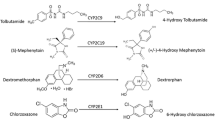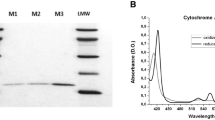Abstract
Chlorzoxazone (CZX), a benzoxazolone derivative, has been approved for the treatment of musculoskeletal disorders to relieve localized muscle spasm. However, its idiosyncratic toxicity reported in patients brought attention, particularly for hepatotoxicity. The present study for the first time aimed at the relationship between CZX-induced hepatotoxicity and identification of oxirane intermediate resulting from metabolic activation of CZX. Two N-acetylcysteine (NAC) conjugates (namely M1 and M2) and two glutathione (GSH) conjugates (namely M3 and M4) were detected in rat & human microsomal incubations with CZX (200 μM) fortified with NAC or GSH, respectively. The formation of M1-M4 was NADPH-dependent and these metabolites were also observed in urine or bile of SD rats given CZX intragastrically at 10 mg/kg or 25 mg/kg. NAC was found to attach at C-6’ of the benzo group of M1 by sufficient NMR data. CYPs3A4 and 3A5 dominated the metabolic activation of CZX. The two GSH conjugates were also observed in cultured rat primary hepatocytes after exposure to CZX. Inhibition of CYP3A attenuated the susceptibility of hepatocytes to the cytotoxicity of CZX (10–400 μM). The in vitro and in vivo studies provided solid evidence for the formation of oxirane intermediate of CZX. This would facilitate the understanding of the underlying mechanisms of toxic action of CZX.














Similar content being viewed by others
Abbreviations
- ABT:
-
1-Aminobenzotriazole
- AHH:
-
Aryl hydrocarbon hydroxylase
- BBR:
-
Benzbromarone
- CE:
-
Collision energy
- CCK-8:
-
Cell Counting Kit-8
- CMC-Na:
-
Carboxymethylcellulose sodium
- CYP:
-
Cytochrome P450
- CZX:
-
Chlorzoxazone
- DDI:
-
Drug-drug interactions
- DMEM:
-
Dulbeecco’s Modified Eagle Medium
- DMSO:
-
Dimethyl sulfoxide
- DP:
-
Declustering potential
- EPI:
-
Enhanced product ion
- FBS:
-
Fetal bovine serum
- FDA:
-
Food and Drug Administration
- GSH:
-
Glutathione
- HLMs:
-
Human liver microsomes
- HMBC:
-
Long-range proton-carbon heteronuclear multiple bond correlation
- HPLC:
-
High performance liquid chromatography
- HRMS:
-
High-resolution mass spectrometry
- HSQC:
-
Two-dimensional NMR proton-carbon heteronuclear single quantum correlation
- IADRs:
-
Idiosyncratic adverse drug reactions
- IDILI:
-
Idiosyncratic drug-induced liver injury
- IS:
-
Internal standard
- KTZ:
-
Ketoconazole
- LC–MS/MS:
-
Liquid chromatography-tandem mass spectrometry
- MRM:
-
Multiple reaction monitoring
- MS:
-
Mass spectroscopy
- MS/MS:
-
Tandem mass spectrometry
- NAC:
-
N-Acetyl-L-cysteine
- NADPH:
-
Reduced nicotinamide adenine dinucleotide phosphate
- NL:
-
Neutral loss
- NMR:
-
Nuclear magnetic resonance
- 6-OH-CZX:
-
6-Hydroxychlorzoxazone
- tR :
-
Retention time
- PBS:
-
Phosphate buffered saline
- RLMs:
-
Rat liver microsomes
- SD:
-
Standard deviation
- SMZ:
-
Sulfamethoxazole
- ZOX:
-
Zoxazolamine
References
Ahmad T, Valentovic MA, Rankin GO (2018) Effects of cytochrome P450 single nucleotide polymorphisms on methadone metabolism and pharmacodynamics. Biochem Pharmacol 153:196–204
Aronson JK (2016) chlorzoxazone. In: Aronson JK (ed) Meyler's Side Effects of Drugs. Elsevier Science, Netherlands, pp:279
Attia SM (2010) Deleterious Effects of Reactive Metabolites. Oxid Med Cell Longev 3:238–253
Born SL, Hu JK, Lehman-McKeeman LD (2000) O-Hydroxyphenylacetaldehyde is a hepatotoxic metabolite of coumarin. Drug Metab Dispos 28:218–223
Carlson GP (2011) Hepatotoxicity and pneumotoxicity of styrene and its metabolites in glutathione S-transferase-deficient mice. Drug Metab Dispos 34:440–444
Carriere V, Goasduff T, Ratanasavanh D, Morel F, Gautier JC, Guillouzo A, Beaune P, Berthou F (1993) Both cytochromes P450 2E1 and 1A1 are involved in the metabolism of chlorzoxazone. Chem Res Toxicol 6(6):852–857
Chen M, Suzuki A, Thakkar S, Yu K, Hu C, Tong W (2016) DILIrank: The largest reference drug list ranked by the risk for developing drug-induced liver injury in humans. Drug Discov Today 21:648–653
Cho T, Uetrecht J (2017) How Reactive Metabolites Induce an Immune Response That Sometimes Leads to an Idiosyncratic Drug Reaction. Chem Res Toxicol 30(1):295–314
Desiraju RK, Renzi NL, Nayak RK, Ng KT (1983) Pharmacokinetics of chlorzoxazone in humans. J Pharm Sci-US 72:991–994
Domino EF (1974) Centrally acting skeletal-muscle relaxants. Arch Phys Med Rehab 55:369–373
FDA (2022) In Vitro Drug Interaction Studies—Cytochrome P450 Enzyme- and Transporter-Mediated Drug Interactions Guidance for Industry. Official website of the United States Food and Drug Administration. https://www.fda.gov/drugs/drug-interactions-labeling/drug-development-and-drug-interactions-table-substrates-inhibitors-and-inducers. Accessed 6 July 2022.
Gielen JE, Goujon FM, Nebert DW (1972) Genetic regulation of aryl hydrocarbon hydroxylase induction. II. Simple Mendelian expression in mouse tissues in vivo. J Biol Chem 247(4):1125–1137
Guengerich FP (2003) Cytochrome P450 oxidations in the generation of reactive electrophiles: epoxidation and related reactions. Arch of Biochem Biophys 409(1):59–71
Jerina DM, Daly JW, Gouterman M, Spangler D, Loew G (1985) Cytochrome-P450 mediated aromatic oxidation-a theoretical-study. J Am Chem Soc 107:4273–4279
Jiang H, Lai YM, Hu KQ, Chen DX, Liu BX, Liu YG (2015) Genotoxicity of 1-methylpyrene and 1-hydroxymethylpyrene in Chinese hamster V79-derived cells expressing both human CYP2E1 and SULT1A1. Environ Mol Mutagen 56(4):404–411
Kalgutkar AS, Gardner I, Obach RS, Shaffer CL, Callegari E, Henne KR, Mutlib AE, Dalvie DK, Lee JS, Nakai Y (2005) A Comprehensive Listing of Bioactivation Pathways of Organic Functional Groups. Curr Drug Metab 6:161–225
Kim RB, O’shea D, Wilkinson GR (1995) Interindividual variability of chlorzoxazone 6-hydroxylation in men and women and its relationship to CYP2E1 genetic polymorphisms. Clin Pharmacol Ther 57:645–665
Leung L, Kalgutkar AS, Obach RS (2012) Metabolic activation in drug-induced liver injury. Drug Metab Rev 44(1):18–33
Lin G, Tang J, Liu X, Jiang Y, Zheng J (2007) Deacetylclivorine: A gender-selective metabolite formed in female SD rat liver microsome. Drug Metab Dispos 35:607–613
Lucas D, Ferrara R, Gonzalez E, Bodenez P, Albores A, Manno M, Berthou F (1999) Chlorzoxazone, a selective probe for phenotyping CYP2E1 in humans. Pharmacogenetics 9(3):377–388
McMillen BA, Williams HL, Lehmann H, Shepard PD (1992) On central muscle relaxants, strychnine-insensitive glycine receptors and two old drugs: zoxazolamine and HA-966. J Neural Transm 89:11–25
Menger F, Ahrens L, Wiberg K, Gago-Ferrero P (2021) Suspect screening based on market data of polar halogenated micropollutants in river water affected by wastewater. J Hazard Mater 401:123377
Morisseau C, Newman JW, Wheelock CE, Hill T III, Morin D, Buckpitt AR, Hammock BD (2008) Development of metabolically stable inhibitors of mammalian microsomal epoxide hydrolase. Chem Res Toxicol 21:951–957
Nebert DW, Goujon FM, Gielen JE (1972) Aryl hydrocarbon hydroxylase induction by polycyclic hydrocarbons: simple autosomal dominant trait in the mouse. Nat New Biol 236(65):107–110
Oesch F (1973) Mammalian epoxide hydrases: inducible enzymes catalysing the inactivation of carcinogenic and cytotoxic metabolites derived from aromatic and olefinic compounds. Xenobiotica 3(5):305–340
Ono S, Hatanaka T, Hotta H, Tsutsui M, Satoh T, Gonzalez FJ (1995) Chlorzoxazone is metabolized by human CYP1A2 as well as by human CYP2E1. Pharmacogenetics 5(3):143–150
Onur Melen MD (2005) Muscle Relaxants. In: Honorio TB, Srinivasa NR, Robert EM, Spencer SL, Scott MF (eds) Essentials of Pain Medicine and Regional Anesthesia, 2nd edn. Churchill Livingstone, London, pp 159–165
Park BK, Kitteringham NR, Maggs JL, Pirmohamed M, Williams DP (2005) The role of metabolic activation in drug-induced hepatotoxicity. Annu Rev Pharmacol Toxicol 45:177–202
Park BK, Laverty H, Srivastava A, Antoine DJ, Naisbitt D, Williams DP (2011) Drug bioactivation and protein adduct formation in the pathogenesis of drug-induced toxicity. Chem Biol Interact 192:30–36
Peter R, Bocker R, Beaune PH, Iwasaki M, Guengerich FP, Yang CS (1990) Hydroxylation of chlorzoxazone as a specific probe for human liver cytochrome P-450IIE1. Chem Res Toxicol 3:566–573
Qiang S, Greenhaw J, Salminen WF (2014) Inhibition of cytochrome P450s enhances (+)-usnic acid cytotoxicity in primary cultured rat hepatocytes. J Appl Toxicol 34:835–840
Robinson JR, Nebert DW (1974) Genetic expression of aryl hydrocarbon hydroxylase induction. Presence or absence of association with zoxazolamine, diphenylhydantoin, and hexobarbital metabolism. Mol Pharmacol 10(3):484–493
Roszkowski AP (1960) A pharmacological comparison of therapeutically useful centrally acting skeletal muscle relaxants. J Pharmacol Exp Ther 129:75–81
Shen L, Hillebrand A, Wang DQH, Liu M (2012) Isolation and Primary Culture of Rat Hepatic Cells. JOVE-J vis Exp 64(64):e3917
Steven DW (2009) Skeletal Muscle Relaxants. In: Steven DW (ed) Pain Review. Saunders [Imprint], Elsevier: Health Sciences Division, Philadelphia, pp 651–656
Thakore KN, Mehendale HM (2014) Chlorzoxazone. In: Wexler P (ed) Encyclopedia of Toxicology, 3rd edn. Academic Press, New York, pp 938–939
Tomaszewski JE, Jerina DM, Daly JW (1975) Deuterium isotope effects during formation of phenols by hepatic monoxygenases. Evidence for an alternative to the arene oxide pathway. Biochemistry 14(9):2024–2031
Tomaszewski JE, Jerina DM, Levin W, Conney AH (1976) A highly sensitive radiometric assay for zoxazolamine hydroxylation by liver microsomal cytochrome P-450 and P-448: Properties of the membrane-bound and purified reconstituted system. Arch Biochem Biophys 176(2):788–798
Twele R, Spiteller G (1982) Identification of chlorzoxazone metabolites in human urine (author’s transl). Arzneimittelforschung 32:759–763
Uetrecht J, Naisbitt DJ (2013) Idiosyncratic adverse drug reactions: current concepts. Pharmacol Rev 65:779–808
Wang K, Wang H, Peng Y, Zheng J (2016) Identification of epoxide-derived metabolite(s) of benzbromarone. Drug Metab Dispos 44:607–615
Wang H, Peng Y, Zhang T, Lan Q, Zhao H, Wang W, Zhao Y, Wang X, Pang J, Wang S, Zheng J (2017) Metabolic epoxidation is a critical step for the development of benzbromarone-induced hepatotoxicity. Drug Metab Dispos 45:1354–1363
Witt L, Suzuki Y, Hohmann N, Mikus G, Haefeli WE, Burhenne JU (2016) ltrasensitive quantification of the CYP2E1 probe chlorzoxazone and its main metabolite 6-hydroxychlorzoxazone in human plasma using ultra performance liquid chromatography coupled to tandem mass spectrometry after chlorzoxazone microdosing. J Chromatogr B 1027:207–213
Yasuhara M, Levy G (1988) Pharmacodynamics of zoxazolamine and chlorzoxazone in rats. Pharm Res 5(7):401–407
Zerilli A, Lucas D, Dreano Y, Picart D, Berthou F (1998) Effect of pyrazole and dexamethasone administration on cytochrome P450 2E1 and 3A isoforms in rat liver and kidney: lack of specificity of p-nitrophenol as a substrate of P450 2E1. Alcohol Clin Exp Res 22(3):652–657
Zimmerman HJ (1999) Muscle spasmolytics. In: Zimmerman HJ (ed) Hepatotoxicity: The Adverse Effects of Drugs and Other Chemicals on the Liver, 2nd edn. Lippincott, Philadelphia, pp 544–545
Author information
Authors and Affiliations
Contributions
Conception and design of the study (CS, YP, JZ); Performance of research and acquisition of data (CS, MZ, CG); Analysis and interpretation of data (CS, MZ, WL); Drafting the article or revising it critically for important intellectual content (CS, WL, YP, JZ). All authors commented on previous versions of the manuscript. All authors read and approved the final manuscript.
Corresponding authors
Ethics declarations
Conflict of interest
The authors declare that there are no conflicts of interest.
Ethical approval
This study does not contain clinical studies or patient data.
Additional information
Publisher's Note
Springer Nature remains neutral with regard to jurisdictional claims in published maps and institutional affiliations.
Supplementary Information
Below is the link to the electronic supplementary material.
Rights and permissions
Springer Nature or its licensor (e.g. a society or other partner) holds exclusive rights to this article under a publishing agreement with the author(s) or other rightsholder(s); author self-archiving of the accepted manuscript version of this article is solely governed by the terms of such publishing agreement and applicable law.
About this article
Cite this article
Sun, C., Zhang, M., Guan, C. et al. In vitro and in vivo metabolic activation and hepatotoxicity of chlorzoxazone mediated by CYP3A. Arch Toxicol 98, 1095–1110 (2024). https://doi.org/10.1007/s00204-023-03674-2
Received:
Accepted:
Published:
Issue Date:
DOI: https://doi.org/10.1007/s00204-023-03674-2




